It’s the time of the year again, with the end of the seventh lunar (ghost) month with joss sticks and joss papers burning everywhere in Singapore, another festive season starts. The Mid-Autumn festival (中秋節), or Mooncake festival as some may call it, is well-celebrated among the Chinese communities in all parts of Asia, US and Europe. The mooncake, a typical Chinese pastry traditionally eaten during this festival is a must-have. The most common type of mooncake found in bakeries and shops is the Cantonese styled mooncake. It is a round baked pastry about the size of a peach, filled with a thick paste filling made from lotus seed or red beans, some containing salted egg yolks. The snow skin mooncake which features a smooth and soft mochi-like dough skin, wrapped with sweet paste fillings, is also gaining popularity the past few years. This mango coconut jelly mooncake, similar to the Osmanthus goji jelly mooncake I made earlier, it’s a much healthier version of the traditional mooncake.
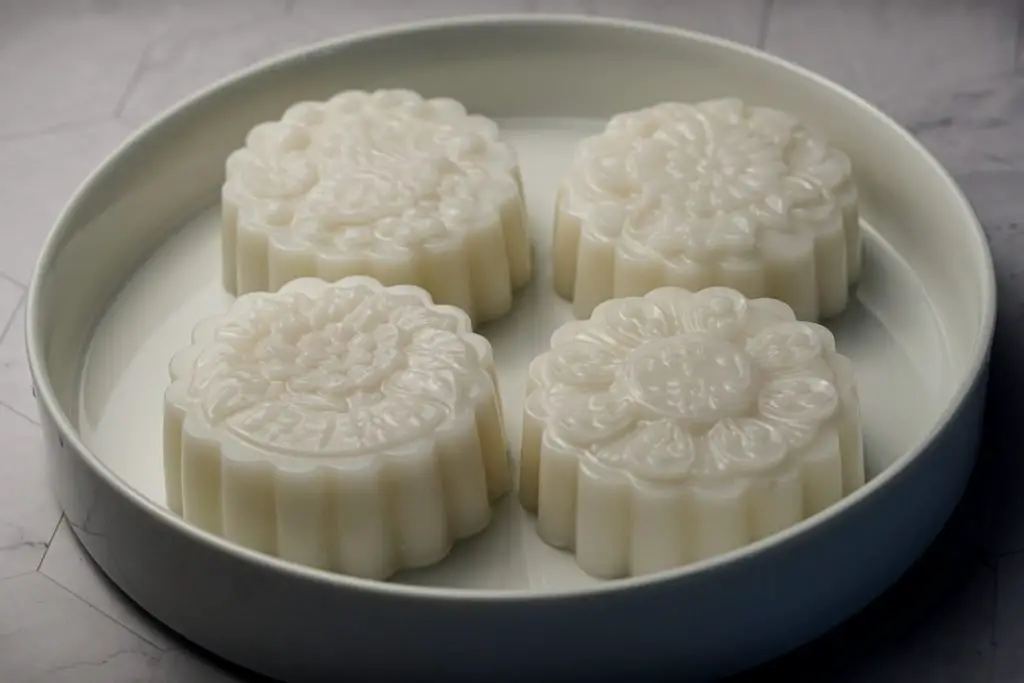
On the 15th day of the eighth lunar month, our family used to gather with neighbours and friends at the community playgrounds in the evening. Our parents brought along the mooncakes and some other local snacks, cut it into quarters or even smaller portions, and ate it with Chinese tea without sugar. While the kids brought their lanterns made of paper or cellophane, lit up the candles within it and ran around playing with each other. Well, these were memories when I was little, during the 1980s-1990s.
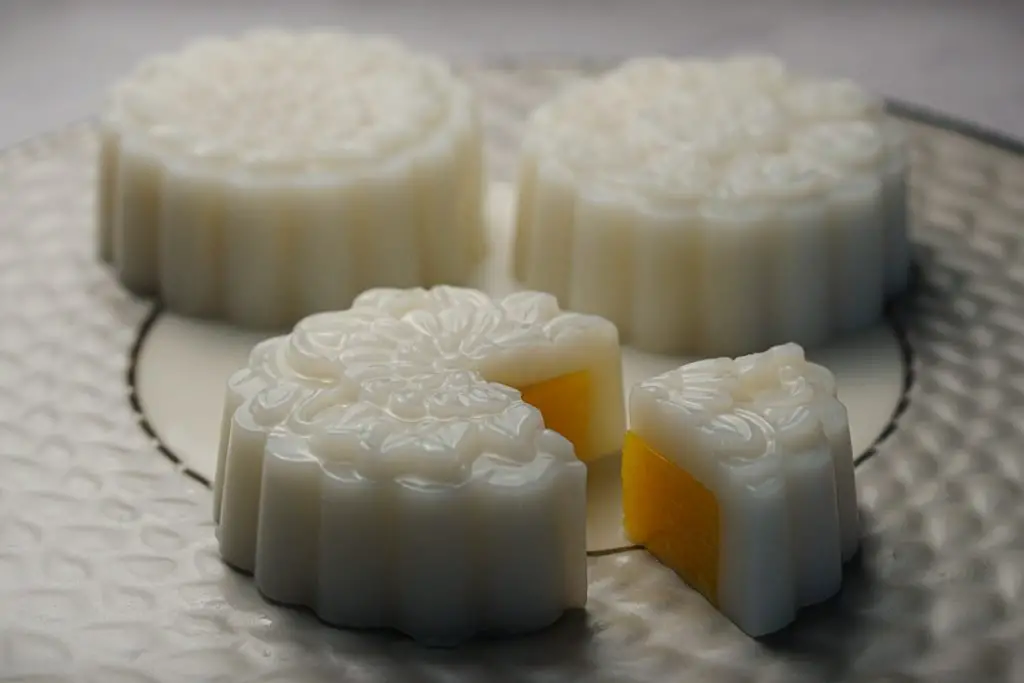
These days, we gather friends at home with mooncakes, tea and some sparkling wines. Our kids play with electronic lanterns that can be switched on with a button, some with loud annoying music. The mooncakes these days also come in countless flavour combinations and shapes. From the snowskin mooncakes, to macaron mooncakes, and also mooncakes made of gelatin or agar agar powder.
So here’s my rendition of the mooncake, a much heathier version made from fresh mangos, coconut milk, Stevia sweetener, and agar agar powder, make it gluten-free, dairy-free, and refined sugar-free. I used two types of moulds as you can see in the picture below, one 2-inch diameter x 1-inch height mould for the mango filling, and another 3-inch diameter x 1-inch height mould for the mooncake shape. These are readily available in most baking ingredient shops in Asia, or you should be able to find them online such as on Amazon.
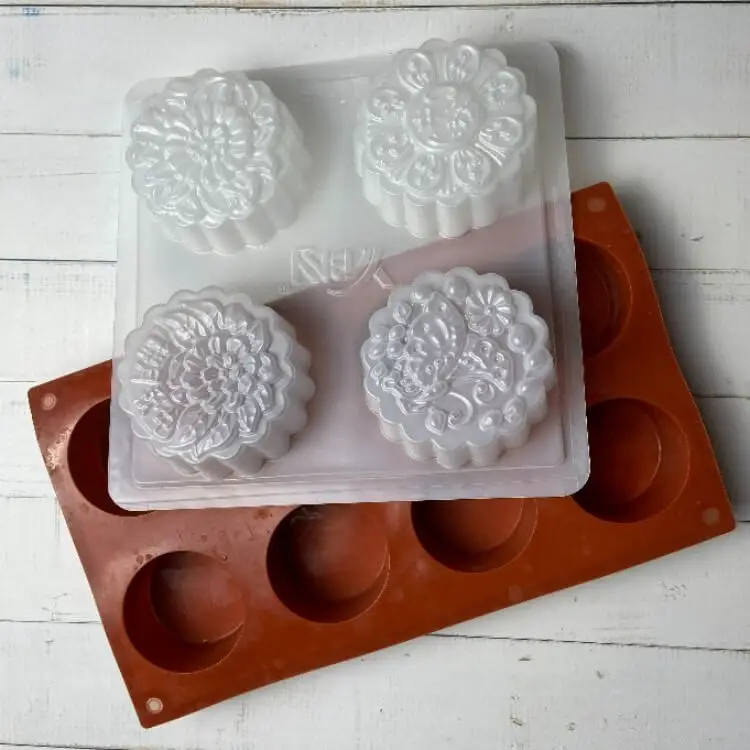
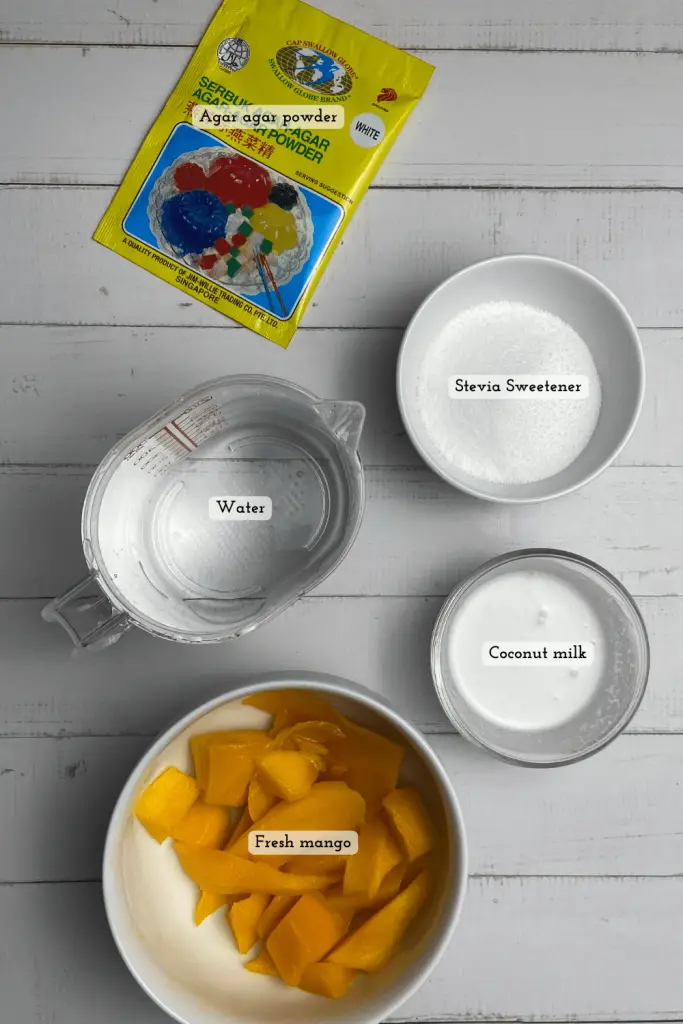
Watch how to make Mango Coconut Jelly Mooncake on YouTube
Pin now, make later
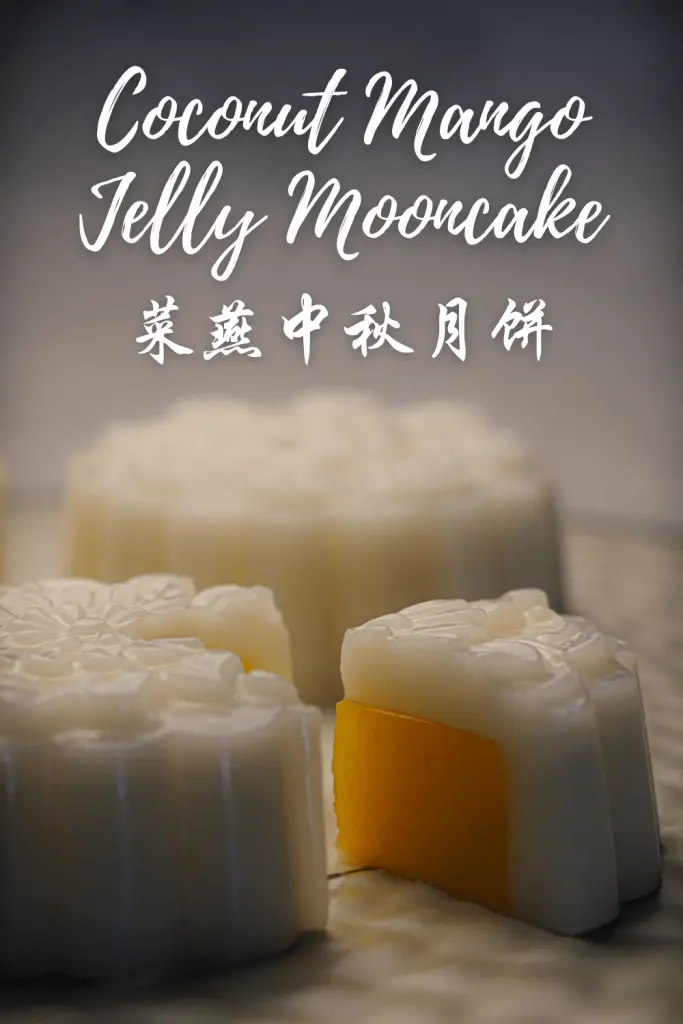
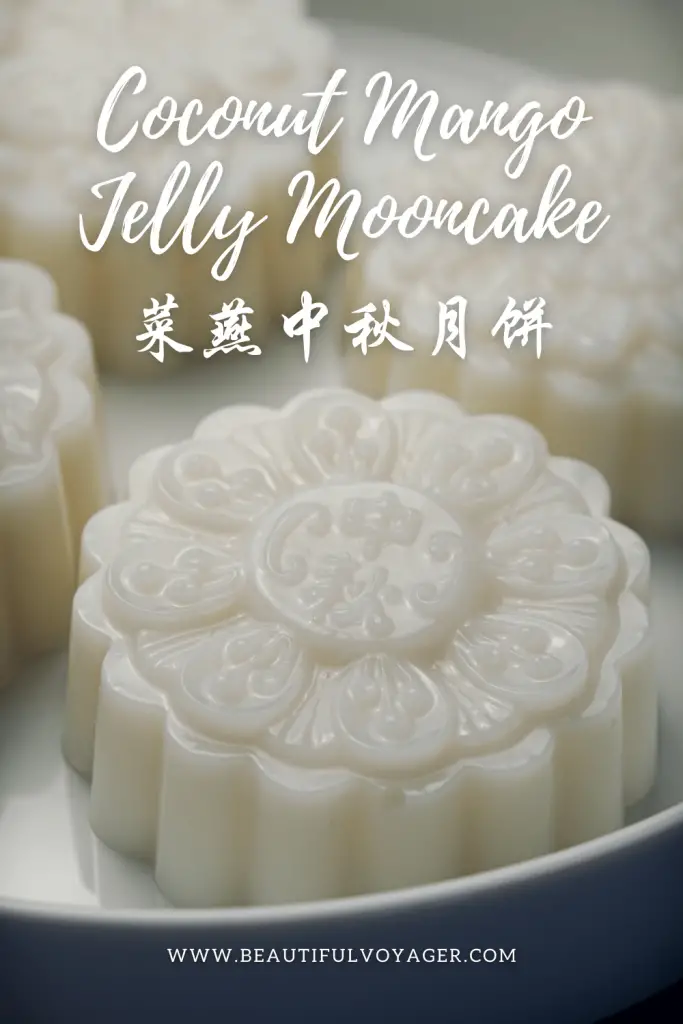
Mango Coconut Jelly Mooncake 芒果椰奶菜燕月饼
Ingredients
- 60-100 g Stevia sweetener or castor sugar
- 150 ml coconut milk
- 650 ml water
- 10 g agar agar powder
- 200 g fresh mango can be replaced with other fruits of your choice such as kiwi, strawberry, blueberry, orange, raspberry
Instructions
- Peel and cut up mango into smaller pieces. Process in a blender into about 200ml of purée.200 g fresh mango
- Boil 100ml water over medium heat. Add 3g agar agar powder to dissolve. Add 200ml of mango purée and mix well. Let it simmer over low heat for about 30 seconds, then turn off heat.Optional to add a sweetener if mango is not sweet enough.650 ml water, 10 g agar agar powder
- Scoop about 50ml of the mango purée into mould for the ‘filling’. This yields about 6 portions.
- Chill the mango purée in the fridge and let it harden. Once set, remove from mould and set aside.
- Boil 550ml water over medium heat. Add 7g of agar agar powder and Stevia sweetener (season to taste, I added only 60g) to dissolve into the water. Add 150ml coconut milk and mix well. Turn off heat once it starts to simmer.Note: the mixture with coconut milk might turn out a little lumpy but that's alright.150 ml coconut milk, 650 ml water, 10 g agar agar powder, 60-100 g Stevia sweetener
- Scoop a portion of the coconut agar agar mixture into the mooncake plastic mould, filling about 1/4 of each mould. Let the base harden in the fridge.
- Place the mango ‘filling’ on top of each coconut base, making sure it's set in the middle of each mould.
- Pour the rest of the coconut agar agar mixture to fill up each mould.
- Let it cool completely before chilling in the fridge for 1-2 hours. Serve cold.

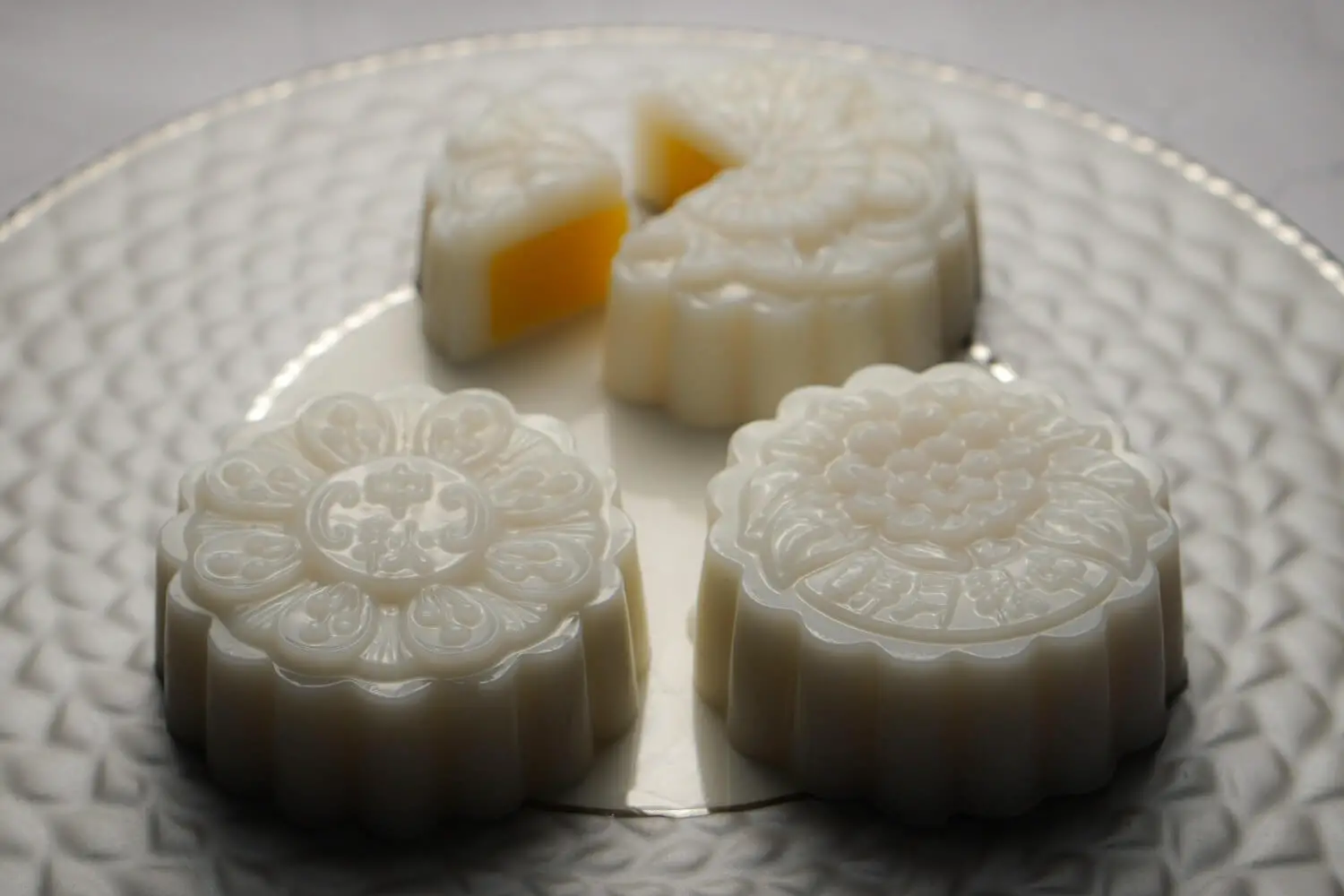
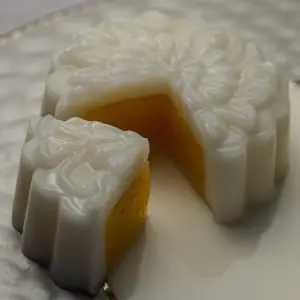
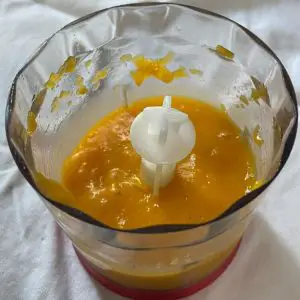
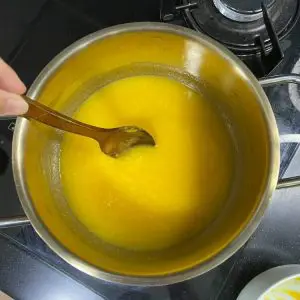
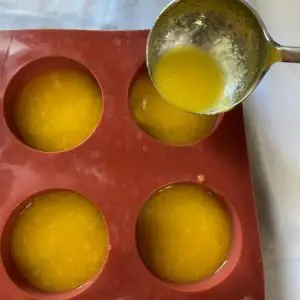
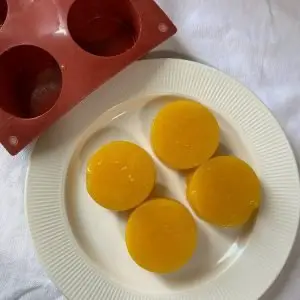
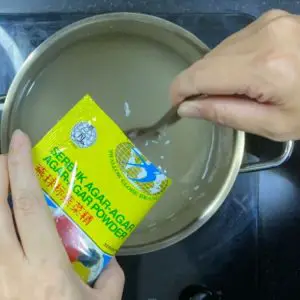

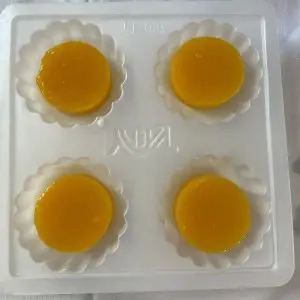
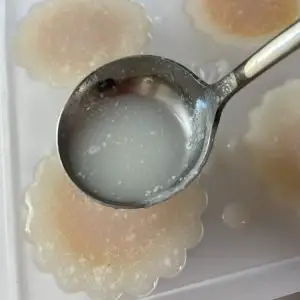
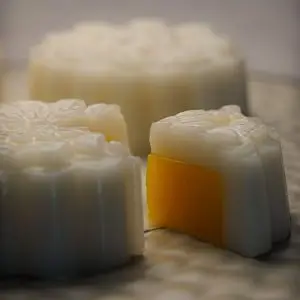
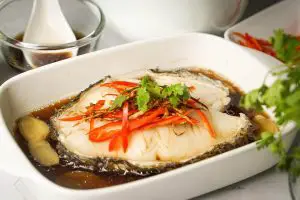 Steamed Cod Fish with Essence of Chicken in 15 Minutes (15分钟鸡精蒸鳕鱼)
Steamed Cod Fish with Essence of Chicken in 15 Minutes (15分钟鸡精蒸鳕鱼)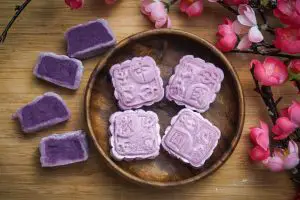 Snow Skin Mooncake 香芋紫薯中秋冰皮月饼 (Taro & Purple Sweet Potato)
Snow Skin Mooncake 香芋紫薯中秋冰皮月饼 (Taro & Purple Sweet Potato)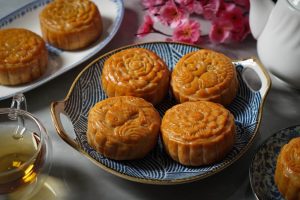
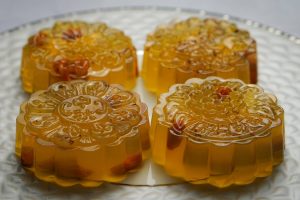
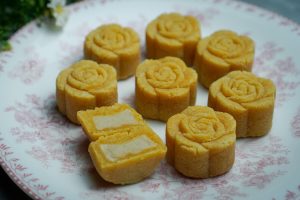

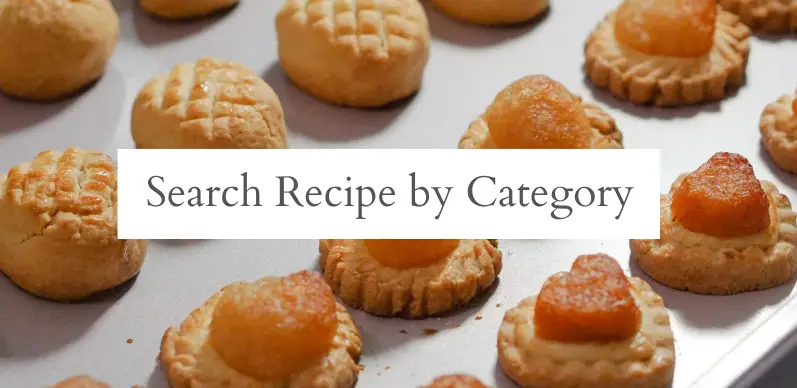
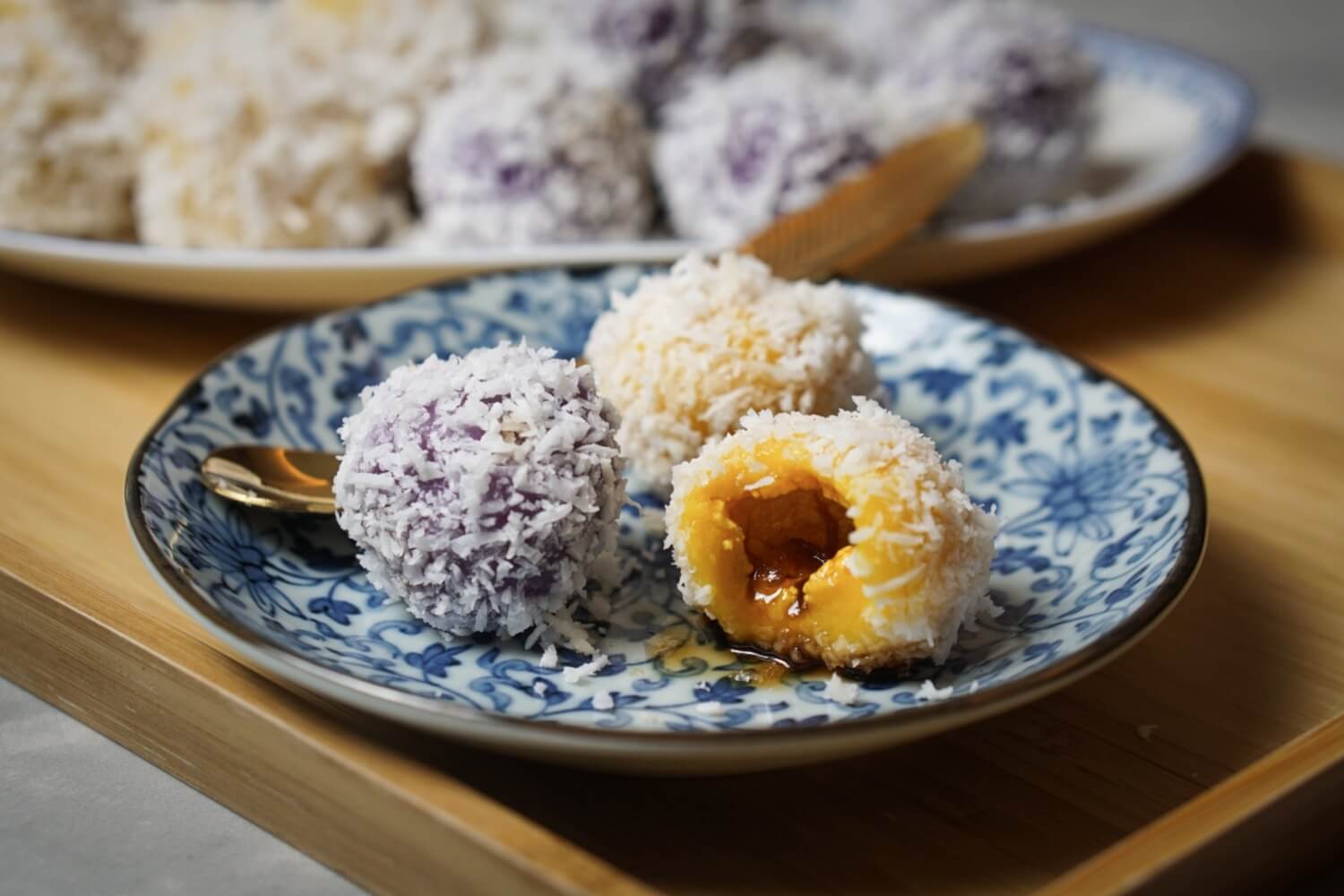
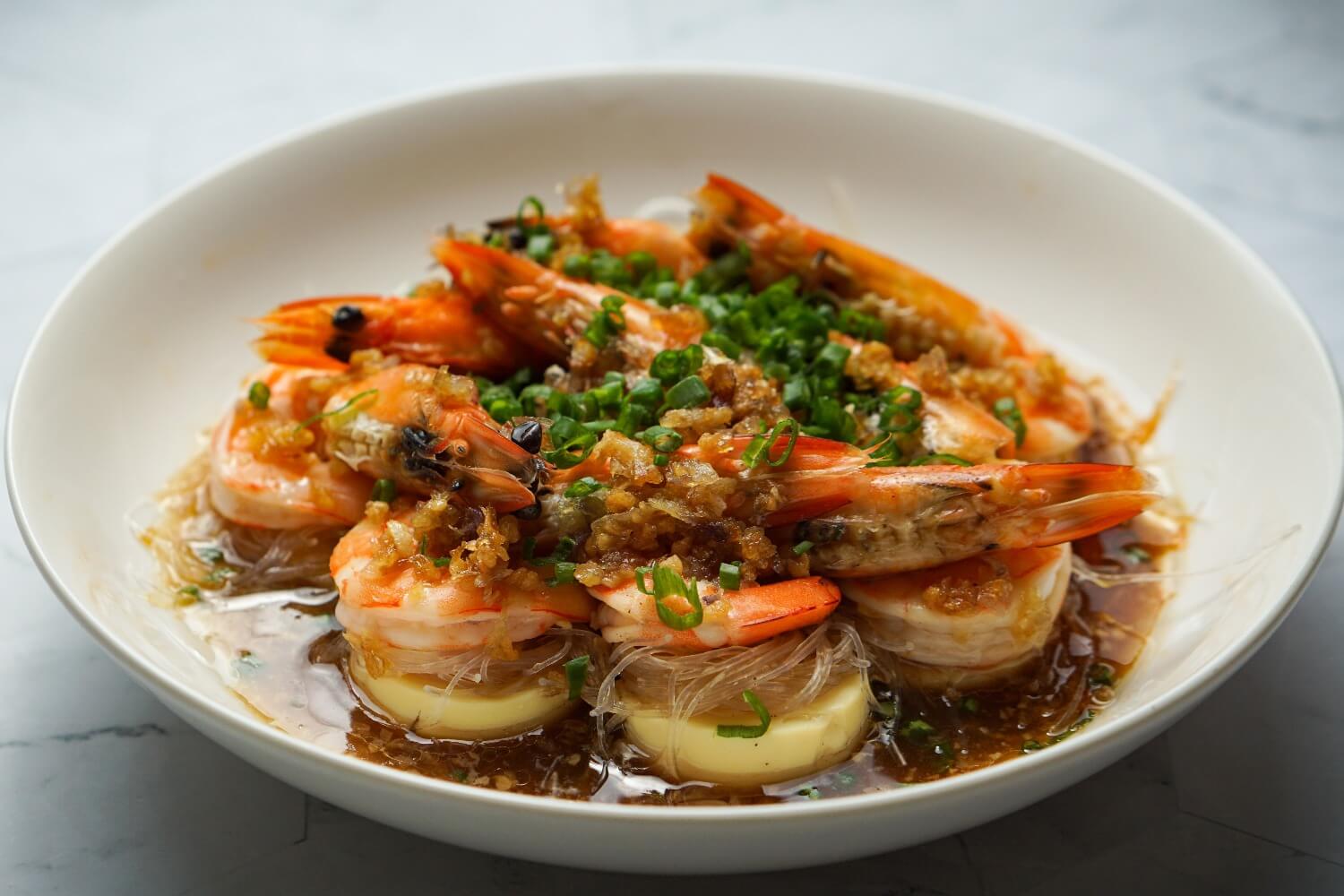
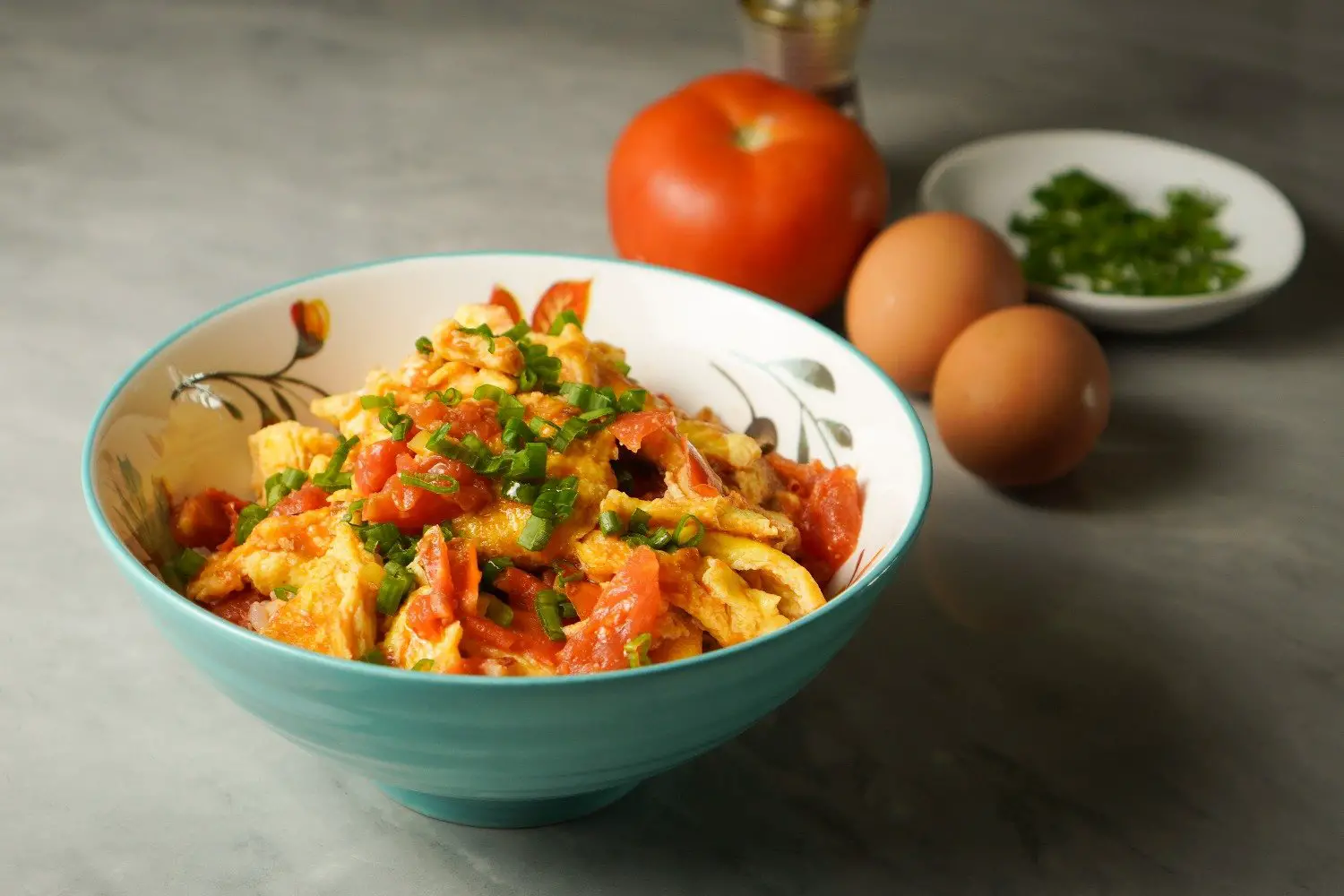



2 September 2022 at 5:42 pmThanks for sharing, will sure try this after I get the moulds 😊
9 September 2022 at 11:28 pmHi Pauline, instead of mango, what else can I use?
Thank you,
Shirley
11 September 2022 at 6:11 amHI Shirley, thanks for visiting. You can use strawberries, kiwi, orange, blueberries, rapsberries, or any of your favorite fruit.
10 September 2022 at 9:19 pmThis looks amazing. I love that this is a healthier version. Can’t wait to try it. Thanks!
11 September 2022 at 6:08 amThanks Susan!
12 September 2022 at 1:45 pmCan you tell me the links for the 2 molds you use? Thank you.
14 September 2022 at 8:19 amHI LY, I got it online many years ago. Are you based in US? I did a search on Amazon so here’s one that is quite similar https://www.amazon.com/Giftshop12-Plastic-Mooncake-Chocolate-Patterns/dp/B01N0LF6LA/ref=psdc_284507_t2_B08JCK6TC1?fbclid=IwAR14Cil8Mz8-90Kprmkj-Huk9pPd3lPSWqV21wlPJqje6VA1-enYjxIdW6g and https://www.amazon.com/Cylinder-Silicone-Chocolate-Covered-Desserts/dp/B08LB57WBV/ref=sr_1_31?keywords=mooncake+silicone+mold&qid=1663143556&sprefix=mooncake+silicon%2Caps%2C349&sr=8-31
14 September 2022 at 1:20 amCan unflavored gelatin powder (like Knox) be used instead of agar? If so, is it the same amount?
Looks beautiful AND delicious!
14 September 2022 at 8:27 amHI Connie, yes you can use gelatin powder. In terms of the quantity, for the agar agar powder I used, the instructions say 10g for 1-litre of water. I read from Knox website (https://www.knoxgelatine.com/basics.htm#:~:text=Back%20To%20Top-,WORKING%20WITH%20KNOX%C2%AE,and%20temperature%20of%20the%20liquid.), 1 envelope of Knox will gel 2 cups of liquid, so you can estimate the amount to use accordingly. Hope this helps.